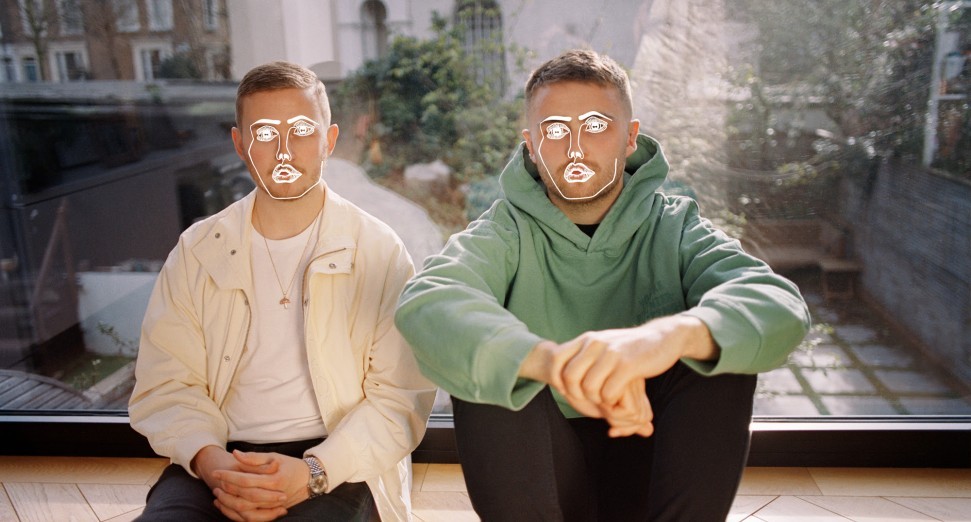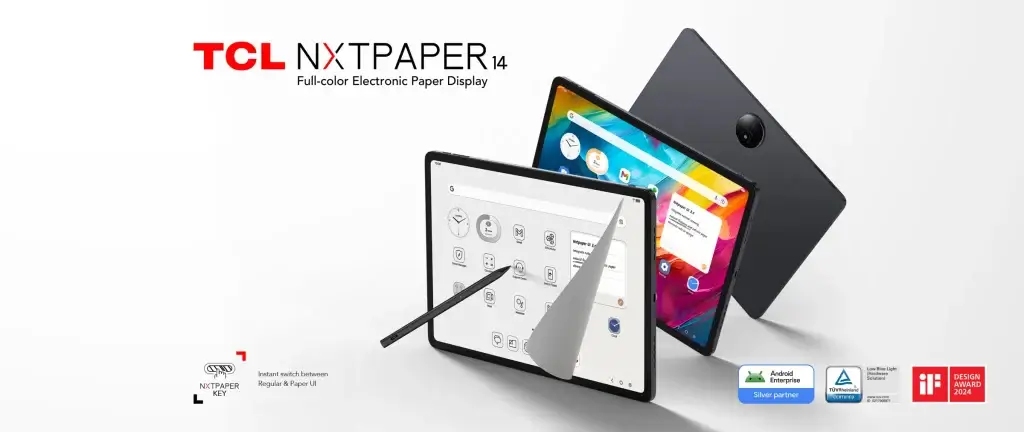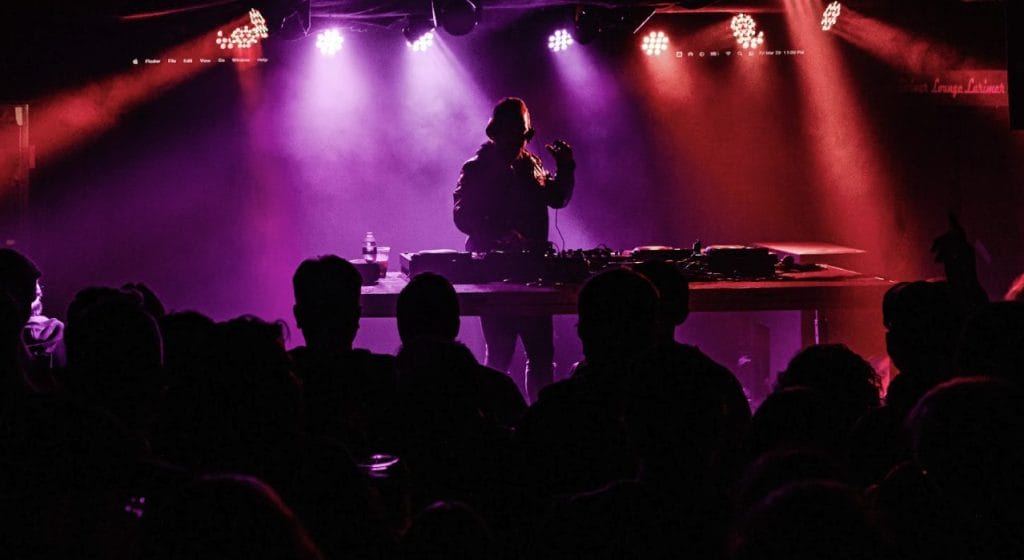
How to Promote Your Music on Spotify: Step-by-Step Guide for Independent Artists
Above Image C/O Magnetic Magazine Recordings’ Artist Discognition
Spotify promotion feels crowded and confusing from the outside, but once you understand how releases actually move through the system, it gets a lot less mysterious. Spotify is basically one huge recommendation machine. It watches how people interact with your songs and then decides who else should hear them.
Every save, stream, skip, playlist add, and follow is part of that picture.
Independent artists have more control over those inputs than they think, especially if they stop treating releases as one-off events and start running them as repeatable campaigns.
This guide walks through a practical, step-by-step Spotify promotion process designed for independent artists. The focus is going to be simple with this (even if we get into the weeds a bit): set your releases up so the algorithm has good data, use playlists intelligently instead of randomly, and support everything with smart content and ads. Along the way, we’ll borrow a few ideas from growth marketing and habit-building research from niches that may sound a little random on the surface, but offer valuable insights into creative ways that actually serve DJs and electronic music producers.
Plus, I’ve passed through all the fluffy comparisons and cringe, “corporate” metaphors.
Think of this as a release system you can run repeatedly. The more times you cycle through it, the more data you collect and the more your catalog compounds. Platforms like One Submit can plug into this system to support playlist outreach, but the system’s structure stays fully in your hands.
Step 1: Build A Real Foundation Before You Release
Most Spotify promotion problems start long before the track comes out.
Artists rush the upload, skip the prep work, and then wonder why the song falls flat. The foundation is everything. Before you think about playlists or ads, you need three things lined up: clean branding, clear goals, and a simple content plan.
Clean branding means your Spotify for Artists profile looks like someone is home. You have current photos, a short bio that sounds like you, sensible links, and an Artist Pick that highlights your latest or most important work. This stuff is boring compared to picking kick drums, but it matters. When new listeners hit your profile, they should immediately understand who you are and where to go next.
Clear goals come next.
Decide what “success” looks like for this release. Are you trying to grow followers? Do you care more about saves and playlist adds? Do you want to wake up old listeners or reach new ones? Different goals lead to different choices. For example, if your priority is algorithmic growth, saves and playlist adds will matter more than raw streams.

Then you need a simple content plan. Look at your calendar and pick a release date at least four weeks out. Work backward from there. Where will you tease the track? How many short clips can you realistically make? Which platforms actually match your audience? This does not need to be an agency-level marketing deck. You just want a rough schedule so you are not improvising everything the night before, which usually leads to scrambling in the moment and poor-quality content, which doesn’t work online, which, overall, is a recipe for frustration, fatigue, and burnout.
This is also where you decide whether to bring in outside help.
If playlist outreach stresses you out or you simply do not have the time, you can work a service like One Submit into your plan so that part runs in parallel while you focus on creative and communication. A strong foundation means that by the time release day arrives, nothing feels rushed and every move has a purpose.
Once your foundation is set, you can prepare the track itself for the reality of how Spotify serves it to its users.
The algorithm cares about two big things in the first phase of a release: how people behave during the first play, and how well your track fits into its internal categories. You shape both through production decisions and metadata.
On the production side, the first 30 seconds matter more than most producers like to admit. Listeners decide very quickly whether to stay or move on, and Spotify pays close attention to skips. This does not mean every track needs to open with a drop. It means the intro should feel confident and intentional. If you want a long ambient build, make sure it still creates curiosity, not confusion.
On the metadata side, accuracy is everything and, unfortunately, it’s probably one of the least sexy things about releasing music. I know this full well, having just ported out the label over to a new distributor the week that this article is being drafted.
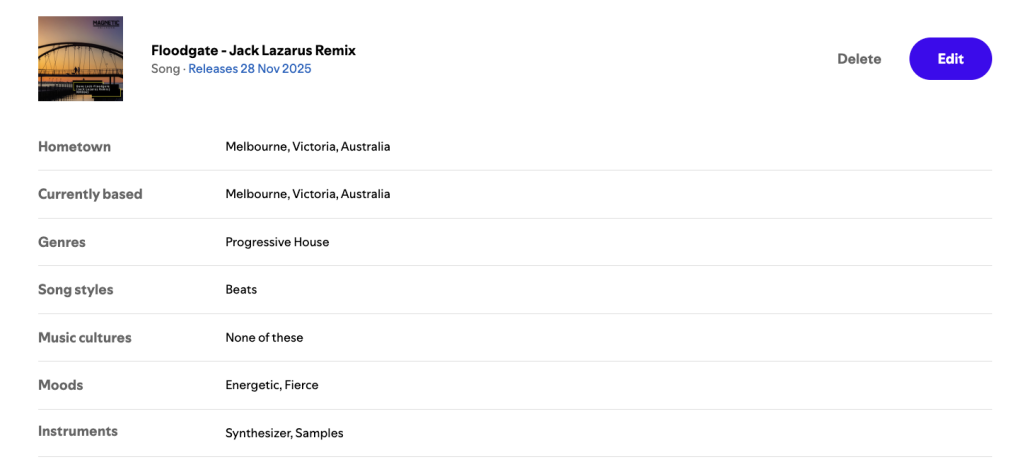
Choose your genres, moods, and language tags carefully. If you lean toward deep melodic house with organic textures, tag it that way. If the track sits closer to techno or breaks, reflect that. Spotify relies heavily on these labels to decide where to test your music. Think of it like shelving records in the right part of the shop. The right people can only find them if they’re filed correctly.
This is also where you fill out your pitch in Spotify for Artists.
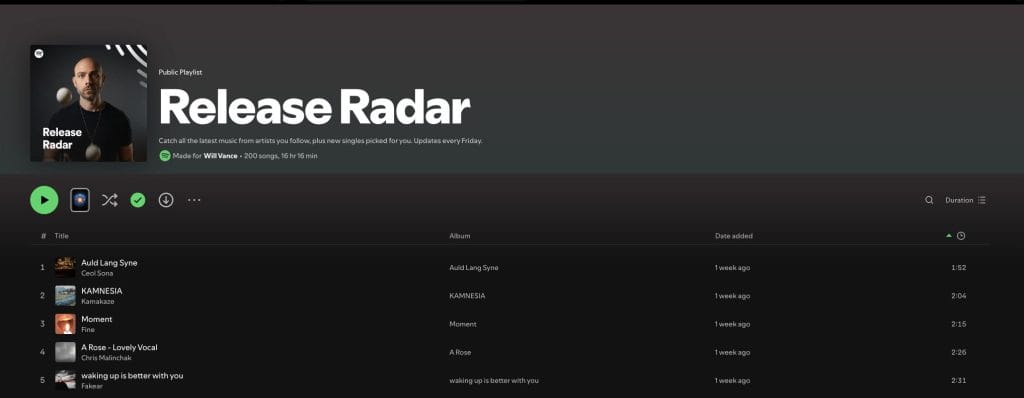
Submit your track at least seven days before release to qualify for Release Radar. Keep the pitch short and factual. Mention your core genres, similar artists, and any relevant story behind the track, but do not ramble. Humans are reading a lot of these.
A bit of habit-design thinking can help here, too.
Research like Duolingo habit-building research shows that small, consistent cues create stronger engagement than big, rare moments. The same idea applies to how people experience your releases. If every track follows a certain standard of clarity in the intros, artwork, and overall vibe, listeners know what to expect and are more likely to stick around as they have a vibe or sonic ethos they can attach to you (humans love compartmentalization, so let that work in your favor even if your music is niche).
All of this setup tells Spotify, “Here is what this track is, here is who it is for, and here is how people are responding.” Good preparation can’t fix weak music, but it can stop strong music from being buried by sloppy details.
Step 3: Make Launch Week A Focused Experiment, Not Chaos

Launch week is where most artists either build momentum or lose it.
Spotify watches how your existing listeners respond in the first three to seven days, especially in Release Radar. That early behavior tells the system whether to keep testing your track more widely or quietly move on.
The trick is to think of launch week as a focused experiment, not a frantic sprint. You already know your goals and your content plan, so now you execute with intention. On release day, make sure your links are ready, your smart link is working, and your profiles are updated. Post a clear announcement with a direct ask. If saves and playlist adds matter most for your strategy, say that.
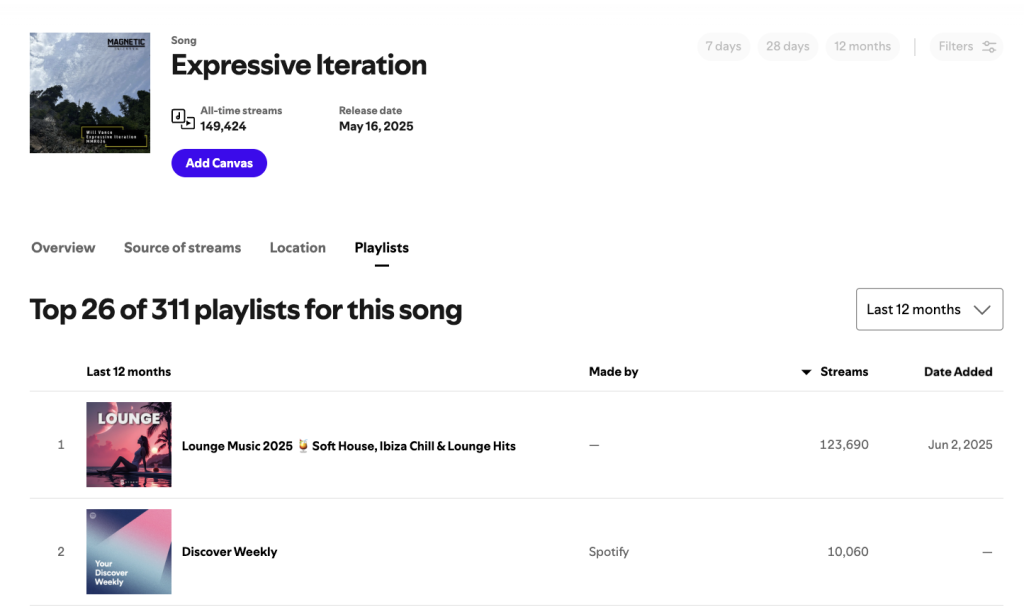
Use your direct channels hard during this window.
Email lists, SMS, private Discords, and close-friends stories on Instagram all punch above their weight because they reach people who already care. Write to them like a human. Explain what the track means to you. Ask them to save it and drop it into a playlist if it connects. Those actions carry more weight than a passive stream.
Content sequencing also helps a lot here. Instead of blasting the same “out now” post everywhere, stagger your storytelling. One day you share the hook in a clip. Another day you break down a drum sound or synth patch. Another day you talk about where you imagine the track being played. This keeps attention on the release without feeling repetitive.
The first week is also a perfect time to test messaging. You might try two different captions across platforms and see which one drives more clicks or replies. You might test a performance clip against a studio shot. Treat every post as a data point you can learn from. Launch week should feel busy but not random.
If you’re using One Submit or another playlist service, align their campaigns with this window. Curators discovering your track in the same period as your fans do can create a stronger, more coherent signal inside Spotify’s system.
Step 4: Use Playlists Strategically Instead Of Desperately
Playlists are still the most talked-about part of Spotify promotion, and also the area where artists burn the most time and energy. The goal is not to get on “a big playlist.” The goal is to build stable, long-term discovery from a mix of algorithmic playlists, listener playlists, and a smaller number of meaningful curator lists.
Algorithmic playlists like Release Radar, Discover Weekly, and various “Radio” feeds are driven by listener behavior. That is why all the earlier work on skip rates, saves, and launch week engagement matters. You cannot directly pitch these, but you can feed them. If a track does well with your followers, Spotify will start testing it with people who listen to similar artists.
Listener playlists are your secret weapon. These are the personal lists your fans make for specific moods, workouts, commutes, or parties. Every time someone adds your track to one of those, you gain both a long-term stream source and a strong positive signal. You can gently encourage this by asking fans to add the song to any playlist where it fits, and by sharing screenshots when people tag you in theirs.
Curator playlists still matter, especially the smaller, niche ones. These are often more effective than giant, generic lists because the listeners are more engaged. Take time to research curators who actually work in your lane. Look at their previous selections. Listen to their lists. When you reach out, keep the message short, polite, and specific about why your track fits what they do.
This is the part of the cycle where a service like One Submit can be incredibly practical. Instead of guessing which playlists are legit, you get access to a vetted network and a structured way to submit tracks, which saves you from a lot of dead ends and spam.
Treat playlists as part of a wider ecosystem, not the whole game. Strong playlists amplify healthy listener behavior. They do not replace it.
As your catalog grows, Spotify’s internal marketing tools and external ads become more important. Used properly, they help you reach new listeners who already sit near your lane. Used badly, they burn money and blur your data.
Discovery Mode
Spotify’s Discovery Mode is a good example. The Spotify Discovery Mode overview explains how it pushes selected tracks deeper into personalized Radio and Autoplay in exchange for a reduced royalty rate. It works best when you point it at tracks that already perform well organically, not random songs you hope will suddenly blow up.
Showcase
Showcase is the opposite side of the same coin. The Spotify Showcase documentation outlines how this tool creates sponsored recommendations on the Home screen for targeted listeners. It can be a strong way to revive a catalog highlight or bring extra focus to a single you truly believe in.
Other Paid Ads
Outside of Spotify, paid ads on TikTok, Instagram Reels, and YouTube Shorts can drive traffic into your ecosystem if you treat them like experiments rather than lottery tickets. Studies like Short-form video ad performance study show that short, clear creative with one main idea tends to drive better results than overloaded visuals and vague messaging. You can use that as a loose guideline and then test your own versions.
But Before Anything…
Start small.
Run low-budget tests across a few audiences and creative variations. See which combination leads to the most clicks and streams. Turn off what does not work. Scale what does. Paid promotion becomes a lot less scary when you think of it as buying information rather than buying fame.
When you combine smart use of Discovery Mode, Showcase, and external ads with clean listener behavior, you give Spotify a steady stream of reasons to keep recommending your music.
Step 6: Build Growth Loops, Habits, And A Testing Culture

At some point, you want your Spotify promotion to feel less like starting from zero every time and more like compounding momentum. This is where growth loops, habits, and testing come in. The basic idea is simple: build systems where each new listener has a chance to introduce more listeners, and where your own process gets smarter with every release.
A classic growth-loop structure goes like this: someone hears your track, they like it enough to save it or add it to a playlist, their future listening behavior trains the algorithm, and that behavior leads Spotify to introduce your track to new people who act the same way. Over time, that loop compounds. Resources like Growth loop framework guide outline this structure in more detail for tech products, and the same logic applies to your music.
Habits sit on top of that loop.
If you release music once a year with no content in between, there is no habit for people to latch onto or build familiarity with. If you release consistently, post in a recognizable style, and show up in a predictable rhythm, your audience builds you into their routine. The Duolingo habit-building research that I read and have been stewing on over the last wek is a nice external example of this pattern. They show how simple streak cues and daily actions create sticky behavior. In your case, the “streak” might be monthly tracks, weekly breakdowns, or recurring DJ sets you share online.
Testing ties it all together.
After each release, look at what worked. Which posts drove the most saves? Which platforms actually moved the needle? Did your email list or TikTok do more heavy lifting? Keep notes. With every cycle, you adjust a little. That might mean tightening your intros, changing art direction, or doubling down on certain kinds of content.
The goal is not to chase trends but instead to refine your own system until it fits both the way you like to work and the way your listeners naturally behave.
Common Pitfalls That Kill Spotify Momentum

Before we wrap up, it is worth naming a few common mistakes that quietly kill Spotify momentum.
The first is releasing in a rush without giving yourself enough time to pitch, plan, or even think. The second is ignoring metadata and hoping the algorithm will magically figure it out. The third is chasing every playlist you can find, even when the genre fit is wrong or the streams look suspicious.
Another big one is thinking of promotion as something separate from the art.
In reality, your arrangement, your intros, your mix decisions, your visual choices, and your presence on social platforms all feed into the same system. If you treat promotion like an afterthought, the whole structure feels off.
Finally, avoid shortcuts that promise quick numbers at the expense of your long-term health. Fake streams, botted playlists, and shady services do not only fail to build a real fanbase. They also send bad data into Spotify, which can hurt future releases.
Stick to tools and partners that keep your ecosystem clean. That includes services like One Submit, which are built around real curators and real listeners, not mystery traffic.
To make this practical, here is a clean action plan you can reuse for each release:
- Lock a release date at least four weeks out.
- Tighten your Spotify for Artists profile and set an Artist Pick.
- Decide your main goal for this release: followers, saves, playlist adds, or algorithmic reach.
- Upload the track with accurate metadata and submit your pitch at least seven days before release.
- Build a basic content calendar with teasers, behind-the-scenes clips, and at least a few short-form videos.
- Prep your email, SMS, or Discord messages for launch week.
- Decide whether to run playlist outreach yourself or fold in One Submit.
- On release day, drive your closest supporters to save the track and add it to playlists.
- Throughout week one, post a mix of performance, studio, and storytelling content.
- After the first month, look at the data, note what worked, and fold those lessons into your next release.
Run that loop over and over again and your Spotify presence stops feeling random. It starts to feel like something you can actually steer.

